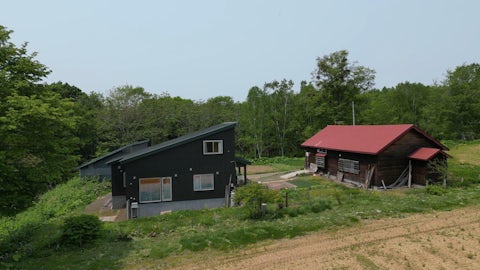
In Japan, snow or Yuki (雪) is more than just what defines the winter season—it is a cultural experience. With long, snowy winters, especially in Hokkaido and the Japanese Alps, the local language has evolved various unique snow terms to describe its different forms. From light snowfall to heavy and wet snow, Japan knows how to capture every characteristic of this winter experience.
1. Yuki(雪)
Yuki is a commonly used term for snow in general, from covering the streets to falling from the sky and even deep and fluffy on the slopes in Japan’s best ski resorts. Thanks to the winds over the Sea of Japan, the amazing daily powder snow creates a light and dry texture that makes it ideal for skiers and snowboarders.

2. Fubuki (吹雪)
Fubuki is a Japanese snowstorm or blizzard. This Japanese snow vocabulary includes strong winds and whiteout conditions. Japanese literature and films often use fubuki to portray the intensity of winter, illustrating the two sides of snow—magical and wild. In the ski resorts, fubuki can be a challenge for most tourists and locals when they encounter it, especially if driving on the roads so please check the latest forecasts and be careful!

3. Konayuki (粉雪)
Konayuki refers to “powder snow” or “snowflakes as fine as powder,” derived from the words kona (powder) and yuki (snow). This Japanese snow vocabulary perfectly describes Japan's ski resorts, making the ideal for skiers and snowboarders to float effortlessly and enjoy the winter experience. Japanese powder snow, referred to as Japow, is world-famous and resorts like Niseko, Hakuba and Nozawa Onsen are heavily inundated with tourists from around Japan and the world as the deep snow falls every day.

4. Shimo (霜)
Shimo is the frosty, icy layer that forms during early winter mornings. As the frost appears in trees, rooftops, and slopes, it creates a stunning crystalline effect before it melts during sunrise. These sights are often witnessed in Hokkaido.

5. Botan-yuki (牡丹雪)
Botan-yuki is known as the large and fluffy snowflakes falling from the sky. From the word botan (peony), these snowflakes appear like the soft petals of the peony flower. Moreover, these falling flakes occur during warmer winter days. Witnessing these heavy snowflakes while sipping hot cocoa or relaxing in an onsen after a day on the slopes is a serene experience you cannot miss.

6. Sasa-yuki (笹雪)
Sasa-yuki translates to “bamboo grass snow” or the light layers of snow on bamboo leaves. This Japanese snow vocabulary is commonly used in southern regions of Japan, yet in Hokkaido, it is also used on its grasses and shrubs. These small moments in nature create a serene landscape and winter experience.

7. Namida-yuki (涙雪)
Namida-yuki is the poetic term for “tear snow,” a snow that falls slowly yet melts quickly. This unique snow term refers to the emotions this type of snow expresses—fleeting and delicate. Namida-yuki captures the moments of bidding farewell to snowfall before another season occurs.

8. Mizore (霙)
Mizore is defined as the mixture of snow and rain. It represents the transition days when the weather mixes snow and rain, often seen in the later days of winter. While Japan is known for its fine powder snow, this phenomenon occurs in the early stages of winter and late spring. On such days, many locals and tourists gather in cozy cabins or onsen, waiting for the pure snow to return.

9. Neyuki (根雪)
Neyuki refers to the unmelted snow accumulated on the ground. From the word itself, ne (root) and yuki (snow), it signifies the snow that has been grounded in the landscape. As the snow stays on the ground, it insulates the soil and plants, protecting the land from harsh winter conditions. As the neyuki melts, many rivers and streams contribute to the fertile and high-quality produce during spring. Hence, for the farmlands around the ski resorts, neyuki signifies the natural and economic lifestyle.

Japan's snow culture

Snow in Japan is more than just a natural phenomenon— it plays a pivotal role in the livelihood, culture, and lifestyle of the mountain resorts. For the residents of these resorts, snow is significant for tourism and business as it drives visitors annually, from skiers to snowboarders and travelers seeking a winter experience. Beyond the slopes and tourist attractions, locals enjoy a deeper relationship with snow, from the picturesque landscapes to snowfall's different characteristics and evoked emotions.
Moreover, Japan's snow culture showcases winter festivals and activities, including the annual Sapporo Snow Festival and Snow Dome events. These events showcase snow sculptures, games, snow drinks, and local food stalls, celebrating Yuki in all its forms. Additionally, farms in the surrounding areas thrive from the rich volcanic soil left by the volcanic activity and the snow-fed waters of the glorious rivers.
The connection of snow to the way of life in mountainous areas of Japan signifies its identity tied to the winter season. The Japanese language showcases snow's many aspects and cultural significance in Japan through its unique snow terms. Knowing these terms would deepen your appreciation of the winter wonderland and Japan’s cultural experience if you're visiting in winter!
Find your ski home in Japan!
Make unforgettable winter experiences, from powder snow skiing to relaxing in an onsen or exploring winter festivals while embracing the rich Japanese vocabulary of snow! Start your search today!













